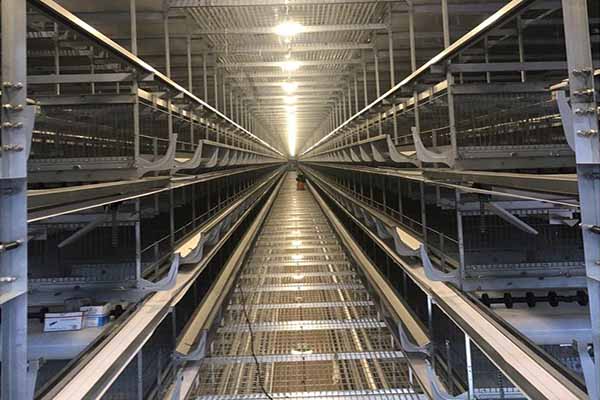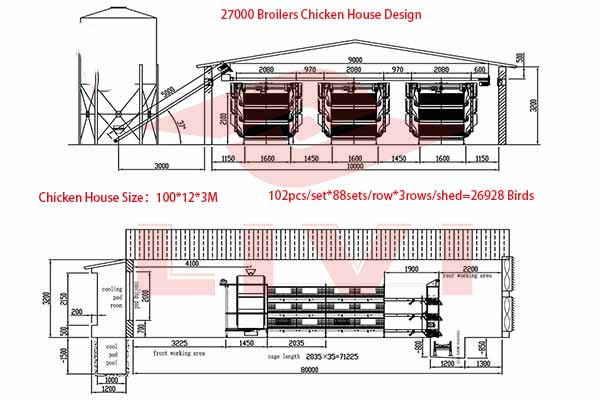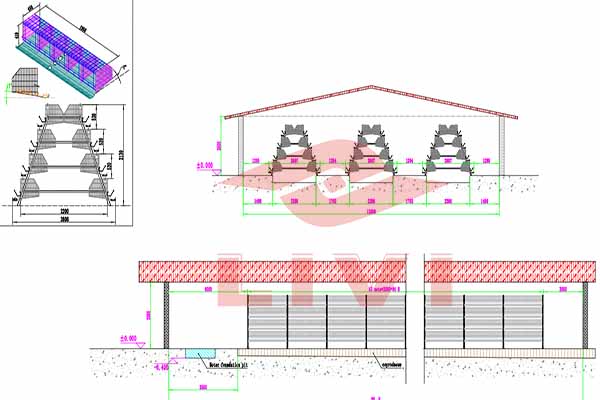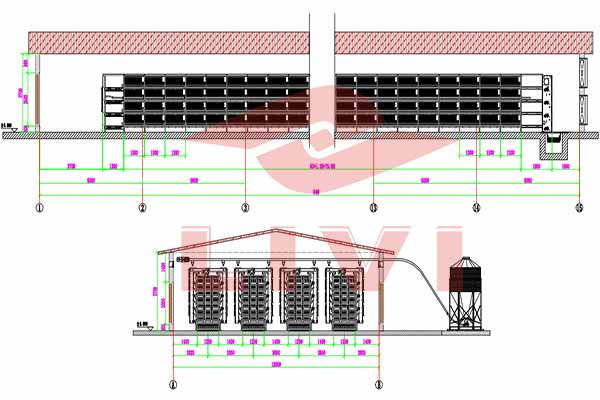Automatic Poultry Cage System for 300,000 Chickens in Kenya: The Ultimate Solution for Large-Scale Farming
The poultry industry in Kenya is booming, and with the increasing demand for poultry products, large-scale farming is becoming more prevalent. For farms looking to manage 300,000 chickens, an efficient automatic poultry cage system is a necessity. In this article, we will explore the benefits of implementing such a system and how it can revolutionize the farming process.
Key Features of an Automatic Poultry Cage System
1. High Capacity
An automatic poultry cage system is designed to accommodate a significant number of chickens, such as 300,000, ensuring optimal space utilization.
2. Automation
Automated systems provide precise control over feeding, lighting, and ventilation, leading to healthier birds and higher productivity.
3. Enhanced Biosecurity
The system minimizes the risk of disease outbreaks by isolating birds, reducing contact with humans and other animals.
4. Efficient Use of Resources
Automatic systems can help in reducing water and feed consumption, leading to cost savings.
5. Easy Maintenance
The design of these systems allows for quick and efficient maintenance, ensuring smooth operation.
How the System Works
The automatic poultry cage system for 300,000 chickens in Kenya typically includes the following components:
– Feeding System: Automates the feeding process, reducing feed wastage and ensuring a consistent diet.
– Watering System: Maintains optimal hydration levels for the chickens.
– Ventilation System: Ensures proper air circulation and temperature control.
– Lighting System: Manages the lighting cycle to mimic natural conditions, promoting growth.
– Monitoring and Control System: Monitors the health and behavior of the chickens, alerting the farmer to any issues.
Case Study: Success with 300,000 Chickens
A large-scale chicken farm in Kenya successfully implemented an automatic poultry cage system for 300,000 chickens. Within a year, they reported:
– 10% Increase in Egg Production
– 20% Decrease in Feed Conversion Ratio
– Significant Reduction in Disease Incidence
Investment and Return on Investment (ROI)
Investing in an automatic poultry cage system for 300,000 chickens requires an initial capital of around $500,000. However, the ROI can be significant, with an estimated payback period of 3-5 years due to the increased productivity and reduced costs.
How to Get Started
If you are considering implementing an automatic poultry cage system for your farm, here’s how to get started:
1. Consultation: Schedule a consultation with a poultry farming expert to discuss your requirements.
2. Design: Customize the system based on your farm’s layout and needs.
3. Installation: Partner with a reputable supplier for installation services.
4. Training: Ensure that your staff is adequately trained to manage the system.
Conclusion
Investing in an automatic poultry cage system for 300,000 chickens in Kenya can be a game-changer for your farm. By automating key processes, you can achieve higher productivity, reduced costs, and a healthier flock.
Contact Livi Machinery today to schedule a consultation and receive a free, tailored养鸡方案 and equipment quote.





